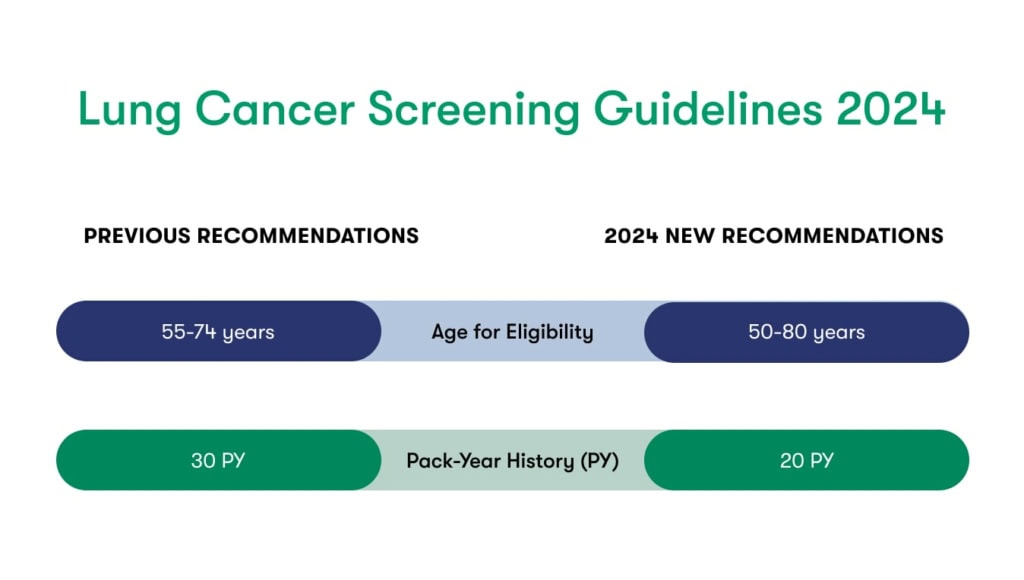Lung cancer is the leading cause of cancer-related death in both men and women. It has consistently held this position for over three decades, largely due to challenges in early detection. Fortunately, widespread adoption of low-dose CT lung cancer screening in at-risk individuals now offers a life-saving avenue for timely detection. When caught early, lung cancer can be treated quickly and, in many cases, cured.
What is a Low-Dose CT Scan?
The desire to screen the lungs has a long history, beginning with chest X-rays. Computed tomography (CT), however, produces more detailed images. Unlike X-ray studies, which pass radiation through the body to produce single-angle images, CT scans create volumetric images of the body’s structures. This advanced technology is superior in sensitivity when it comes to detecting small nodules or lesions.
When caught before it spreads, the likelihood of surviving five years or more improves to 63% compared to 7% for late-stage diagnosis.
American Lung Association
Low-dose CT (LDCT) scans became the preferred modality for screening lung cancer following the results of the National Lung Screening Trial (NLST), a large-scale clinical trial conducted in the United States. The trial compared LDCT screening to chest X-rays for lung cancer screening in high-risk individuals. The NLST found that LDCT screening reduced lung cancer mortality by 20% compared to chest X-rays in the study population. The NLST results were published in 2011, and based on these findings, various medical organizations and guidelines started recommending LDCT screening for certain high-risk groups.
Lung Cancer Screening Guidelines
In 2013, the United States Preventive Services Task Force (USPSTF) issued a recommendation for annual LDCT screening for lung cancer in adults aged 55 to 77 years who have a 30-pack-year smoking history and currently smoke or have quit within the past 15 years. In 2021, they updated their recommendation to include adults aged 50 to 80 years who have a 20-pack-year (or greater) smoking history and currently smoke or have quit within the past 15 years.

If you think you may fall into the at-risk category, talk with your doctor about lung cancer screening. LDCT is widely available in community settings.
What is the Difference Between a Low-Dose CT Scan and a Regular CT Scan
Like a standard CT scan, low-dose CT involves passing X-ray beams through the body from various angles. These X-rays are absorbed differently by different tissues in the body. Detectors on the opposite side of the body measure the amount of X-rays that pass through the body. A computer then processes the information collected by the detectors to create detailed cross-sectional images, or slices, of the body.
Lung cancer screening finds over half of lung cancer at an early stage when it is more curable, compared to only about 25% without screening.
ChestJournal
The key difference between low-dose and standard-dose CT scans is that they use five times less radiation. This reduced dose helps minimize the potential risks associated with radiation exposure while still providing clear images for diagnostic purposes, making it safer for individuals to undergo regular screenings.
How Long Does a Low-Dose CT Scan Take
A low-dose screening CT is one of the quickest and easiest imaging tests. The scan itself takes only about a minute. Including the time it takes to check in at the facility, most patients are in and out of the door within 15-20 minutes. No medications or contrast are administered, you can eat before and after the exam, and you don’t even need to change clothes so long as there is no metal near your chest.
Challenges in Diagnosing Lung Cancer
Diagnosing lung cancer can be challenging, particularly in its early stages. The disease often does not cause noticeable symptoms early on or may produce symptoms easily dismissed or attributed to other respiratory conditions, such as coughing, fatigue, or mild chest pain. This overlap can result in patients not seeking medical attention until the disease has progressed, stressing the importance of annual screening for at-risk individuals.
Access to healthcare services and resources can also influence the timing of lung cancer diagnosis as a definitive diagnosis generally requires imaging studies and procedures, such as biopsies, to confirm the presence of cancer. Individuals with limited access to healthcare may delay seeking medical attention or may not have access to timely diagnostic tests and subspecialty care, leading to delayed diagnosis and advanced disease at presentation.
From an imaging perspective, while early detection of small lung abnormalities can be life-saving, identifying small lesions and distinguishing between benign and potentially malignant findings can be difficult. Routine screening provides the advantage of surveillance, equipping patients and their doctors with the ability to compare and monitor any suspicious changes over the years.
A More Personalized Experience with Low-Dose CT Scanning
Results for LDCT are typically delivered to a patient’s doctor with structured reporting and guidelines for recommended follow-up. Getting a subspecialty second opinion is a valuable resource that can elevate patient care through direct communication with the reading radiologist. A second opinion allows for a more personalized experience, helps ensure accuracy, and can provide peace of mind and reassurance that nothing was missed or misdiagnosed. DocPanel can connect you with a subspecialty-trained thoracic radiologist who can bring decades of experience diagnosing lung cancer from LDCT scans.
“DocPanel radiologists are here to help you understand your scans and risk factors to maximize your health and provide early diagnosis of lung cancer,” says Dr. Francine Jacobson, a Thoracic Radiology Specialist at DocPanel.
Second opinions through the DocPanel platform enable patients worldwide to access US-based subspecialty radiologists virtually. Patients can upload low-dose CT scans and other chest imaging studies, submit specific questions, and engage with the chest or thoracic radiologist reviewing their case. Radiologists provide a detailed evaluation and report within 1-2 business days that a patient can then share with their doctors if they wish to do so. Patients can also submit prior LDCT scans or other chest studies for comparison to aid in the evaluation.
Determining if Lung Cancer Screening with Low-Dose CT is Right for You
Lung cancer screening is proven to save lives. However, less than 10% of eligible Americans have been screened. In some states, screening rates are as low as 1%. If you currently smoke or have smoked in the past, it’s important to talk with your doctor about screening recommendations. The American Lung Cancer Association also offers a quick and easy tool to assess screening eligibility.
14.2 million Americans meet the US Preventive Services Task Force guidelines for lung cancer screening.
Lung Cancer Association
Similar to mammograms and other screening tests, annual lung cancer screening with low-dose CT is fully covered by Medicare and the majority of private insurance plans for those meeting certain at-risk criteria. The requirements vary slightly for each entity, so it is recommended to verify coverage directly with your provider. The American Lung Association offers a handy insurance checklist that guides patients on what questions to ask when determining coverage eligibility.
